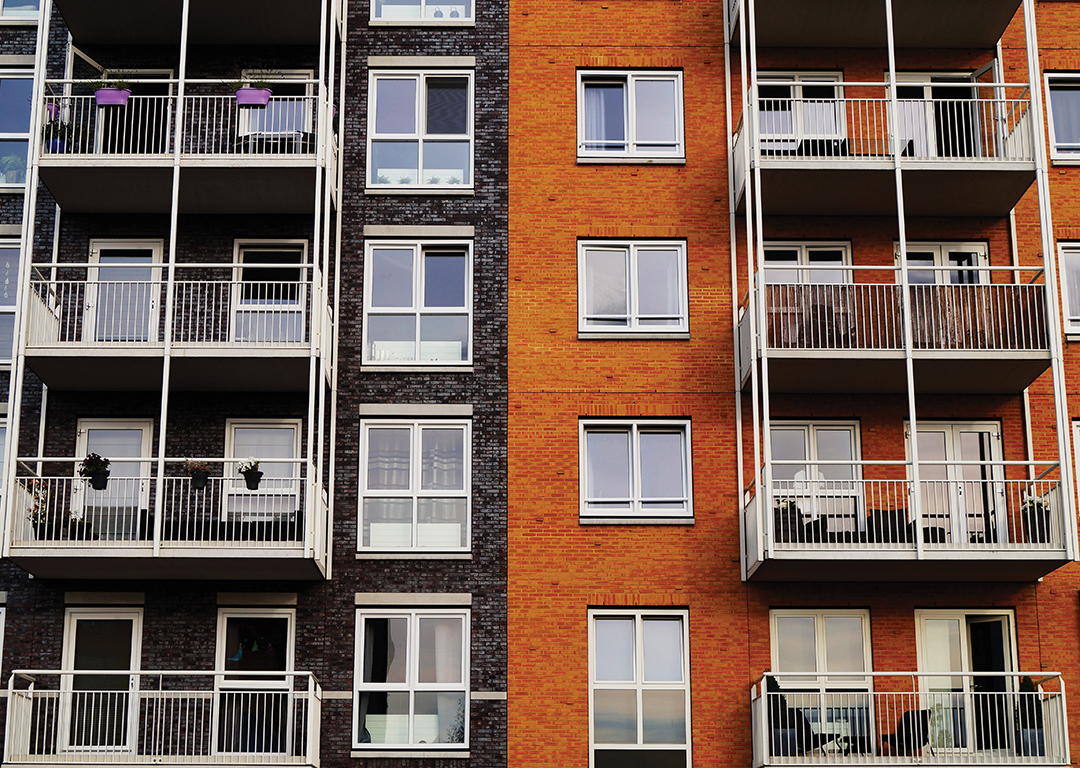Multifamily Investments in the Age of the Coronavirus

Despite our current tumultuous economy, opportunities in certain sectors of real estate are still promising. Recession-resilient real estate, including multifamily housing, is a proven asset to any portfolio. Historically, you can see evidence of the strengths in multifamily housing by looking at recent market crashes, including the 2008-2009 Great Recession. As more people lost their homes during that time, the need for apartment rentals dramatically increased.
Consumer confidence is another indicator that points to resilience in multifamily housing. A recent Gallup Poll indicates that only 50% of Americans think now is a good time to buy a home. That is an all-time low reading. As fewer Americans feel comfortable buying a home, an increase in the need for multifamily housing increases because shelter is still a basic human need.
Due to increased demand, rental prices often increase during both recessions and bull markets. For example, at the height of the most recent bull market in 2019, the average U.S. multifamily rent increased by $2, bringing the total average to $1,472. Cities like Austin, Texas, topped the charts. During recessions, unlike single-family housing, the need for apartment homes typically continues to rise.
Relocation Considerations
Specifically, in cities like Austin, the need for multifamily properties is driven by corporate relocations. Central Texas will soon be home to a new Apple Mac Pro manufacturing headquarters. The city already hosts existing companies such as Dell, General Motors and YETI. On top of that, there’s a certain lure for other companies to come to Texas. Investors saw that in May 2020, when Tesla announced it was considering moving from California to Texas.
This type of volatility increases demand for flexible housing that doesn’t require a long-term commitment. With millions of Americans laid off, or fearing a layoff, the need for short-term housing that allows relocation options is high. Laid-off Americans are expected to be on the move, as they rebuild lives changed by the pandemic.
Changing Needs in Unprecedented Times
Today’s circumstances call for unprecedented considerations. Stay-safe-at-home orders is driving the need for nicer rental properties. Residents are looking for a nice space to work from home and want a better place to spend their time during the shutdown. Rather than spending disposable income on entertainment, more people may be considering spending extra funds on a nicer place to live, to enjoy amenities and new comforts. Many lifestyles have changed dramatically within just a few months.
To gain a competitive advantage, locations and amenities of properties are key. Companies with specific strategies will gain an upper hand and see the most resilience. For example, sparkling renovations at discounted prices in desirable parts of town often drive demand. You can save thousands of dollars without cutting corners by building a strong and loyal relationship with vendors. Quartz countertops, soft-close cabinets and other smart home features are lower-cost amenities and upgrades that can attract an abundance of renters.
Producing amenities to ensure the health and safety of residents is another factor to consider in post-pandemic developments. For example, future projects will likely focus on health-specific details such as antimicrobial copper buttons on elevators. The buttons will prevent the spread of viruses because viruses cannot live on copper. Along with that, there is the opportunity to include new filters and UV lighting that would be disruptive to virus growth.
Tax Benefits of Multifamily Investing
Strategic tax write-offs offer another incentive to invest in multifamily real estate during a down economy. A few of these include maintenance and management costs, insurance premiums, marketing costs and other business expenses, utilities and repairs.
One major tax benefit specific to multifamily real estate is the depreciation tax break. Even though the value of a carefully chosen property should only increase within time, the IRS operates on the assumption that properties will depreciate due to the aging process. The IRS deduction covers all properties (structure only, not land) in the U.S. and is based on aging buildings, in order to smooth out eventual capital expenditures needed to maintain buildings. This special tax code is only for real estate owned for income-producing purposes and does not apply to your place of residence. Many financial experts refer to depreciation as a “phantom” expense, because you are not actually writing a check. Instead, the IRS is allowing you to take an annual deduction, whether you are spending any money on the building or not.
Also, even though the IRS says the building is depreciating, that’s usually not the case. There is a good chance your property’s value is continuing to increase. No other investment type can provide this unique combination of benefits.
Lower Risk Factors
If housing prices fall during a recession, multifamily real estate will allow investors to still earn income. In fact, because there are multiple units paying multiple rent, the risk is smaller. Even if some renters vacate or pay late, you are still generating income because it’s not an all-or-nothing proposition.
There are ways to handle leasing issues with residents that can result in fewer losses. During the height of the pandemic, some properties saw a record in new leases and very few late rental payments. Property managers attribute this to strategic and transparent communication styles with residents, along with the ability to quickly pivot marketing plans to a changing environment.
Overall, in part because of the unique economic challenges and uncertainties surrounding the COVID-19 pandemic, 2020 is the year to consider multifamily real estate investment options. Historically, rates of performance for multifamily real estate are quite strong. For U.S. apartments, the average 10-year rate of return has been a very respectable 6.08%, with 20-year averages even stronger at 9.27%. There’s no reason to believe that will change long-term. There is always a risk with everything in life, but times like these present an opportunity to be bold and to take advantage of opportunities with the potential to increase your revenue for years to come.














